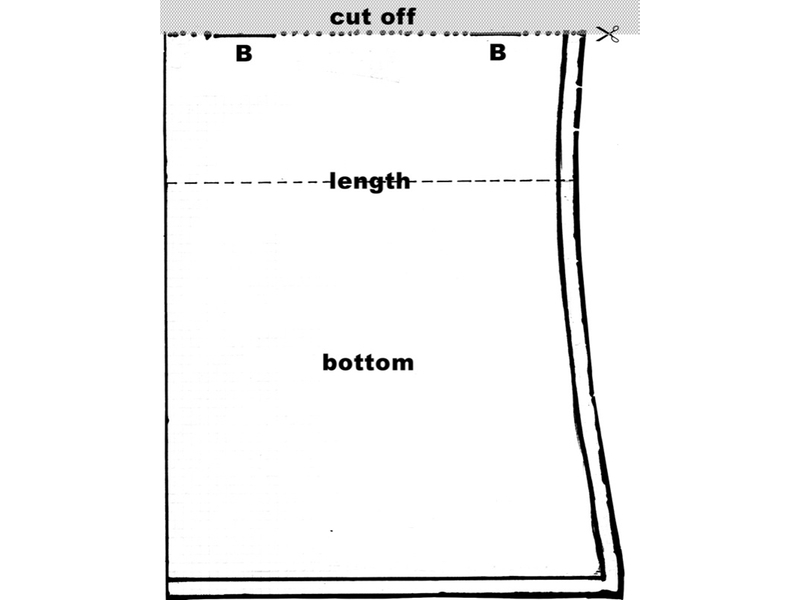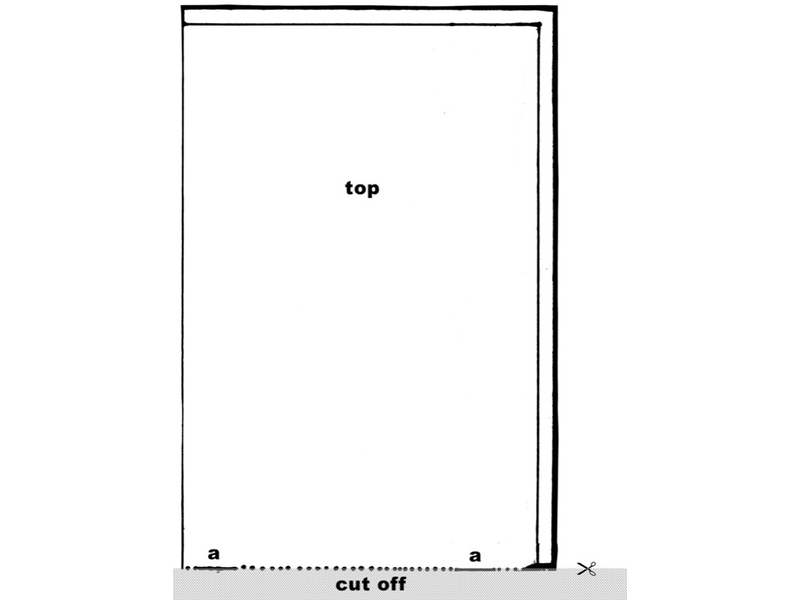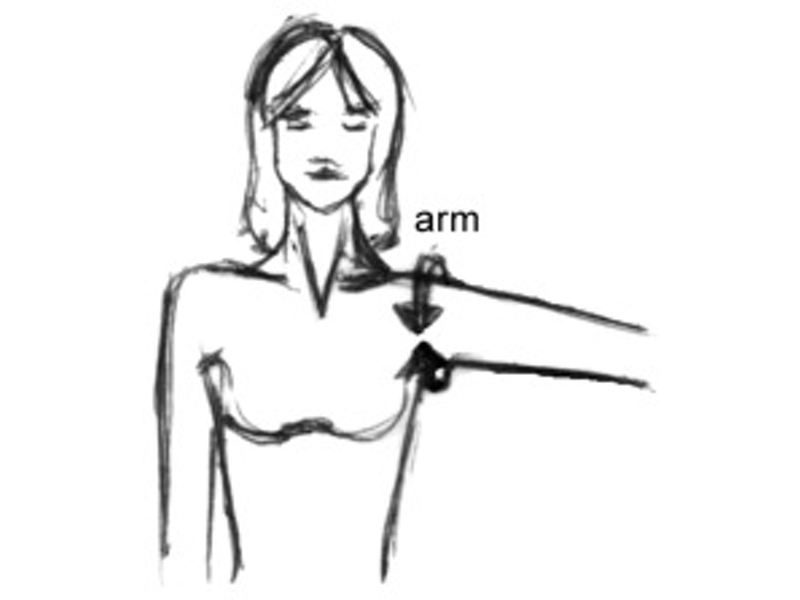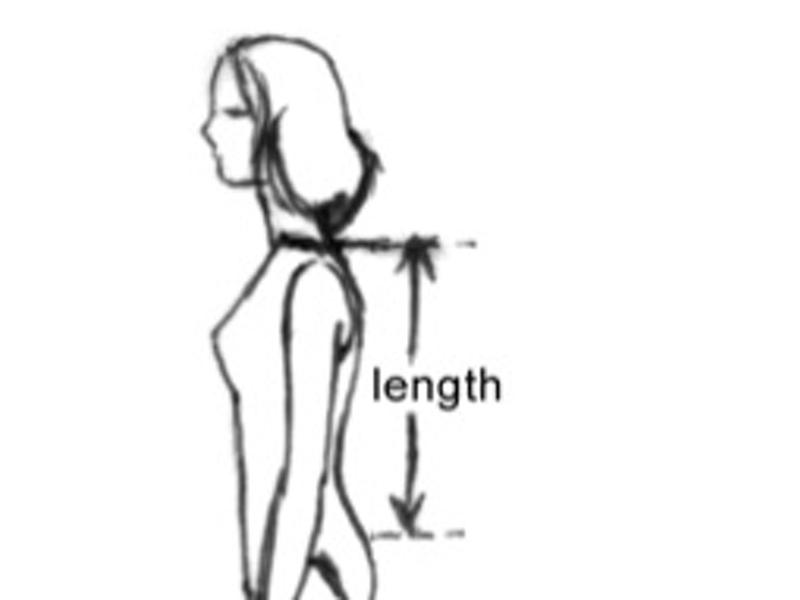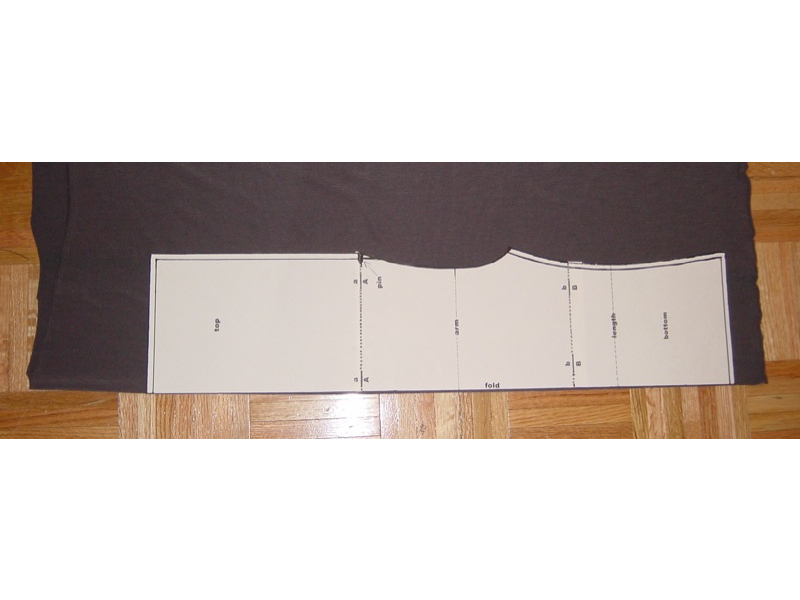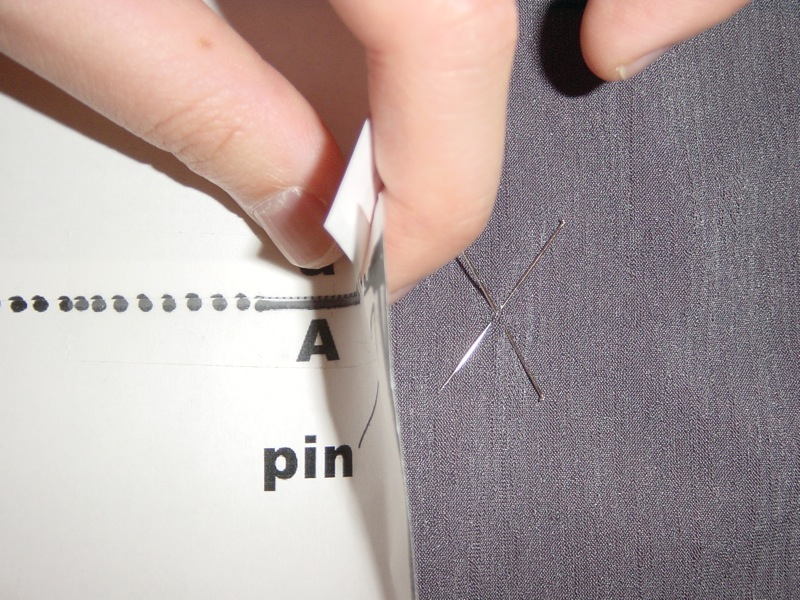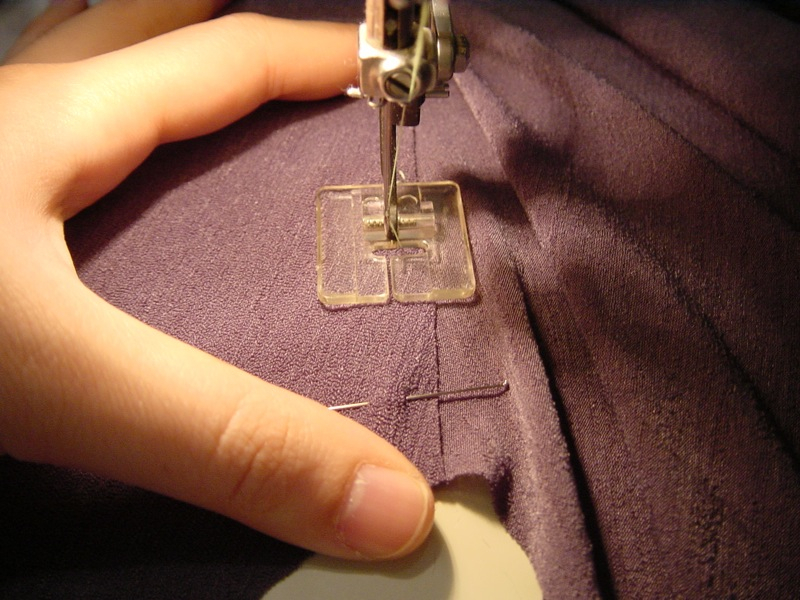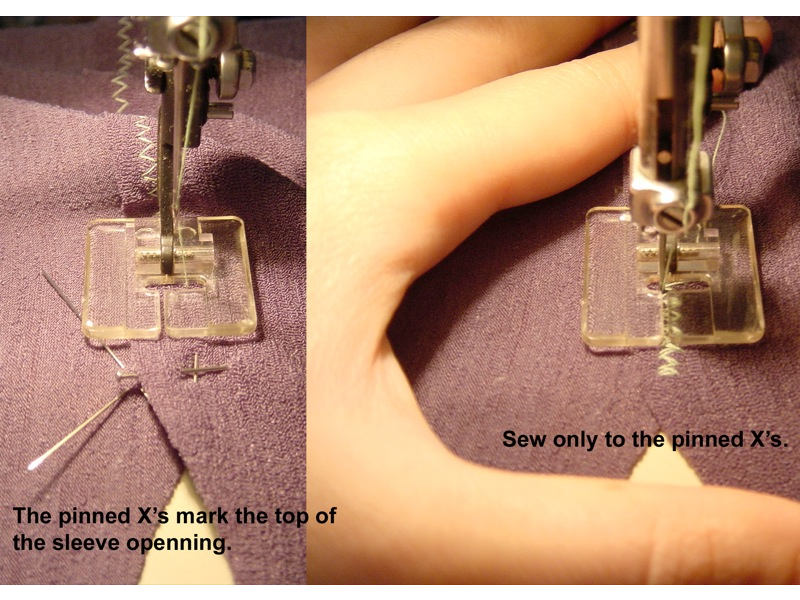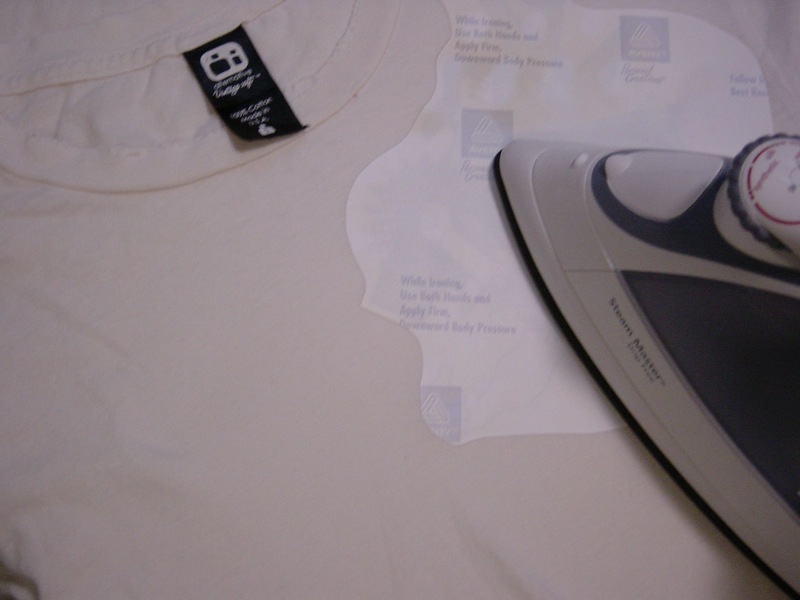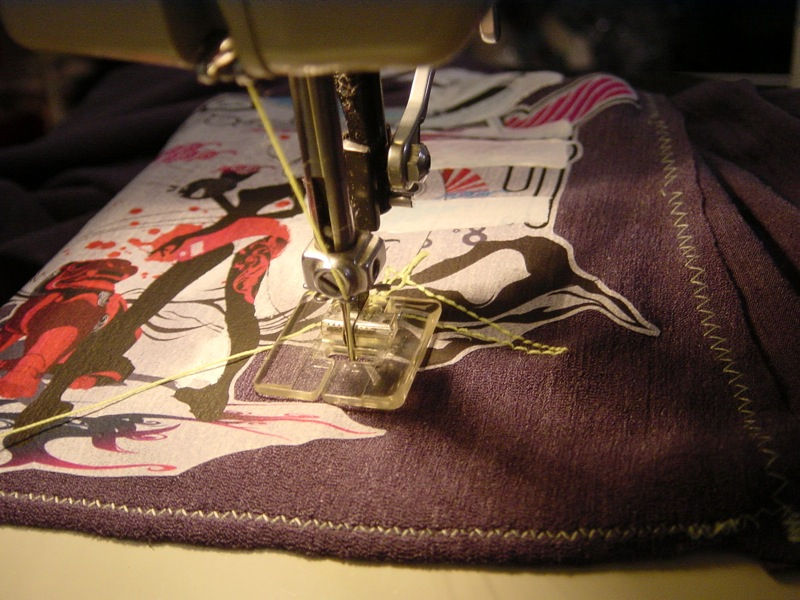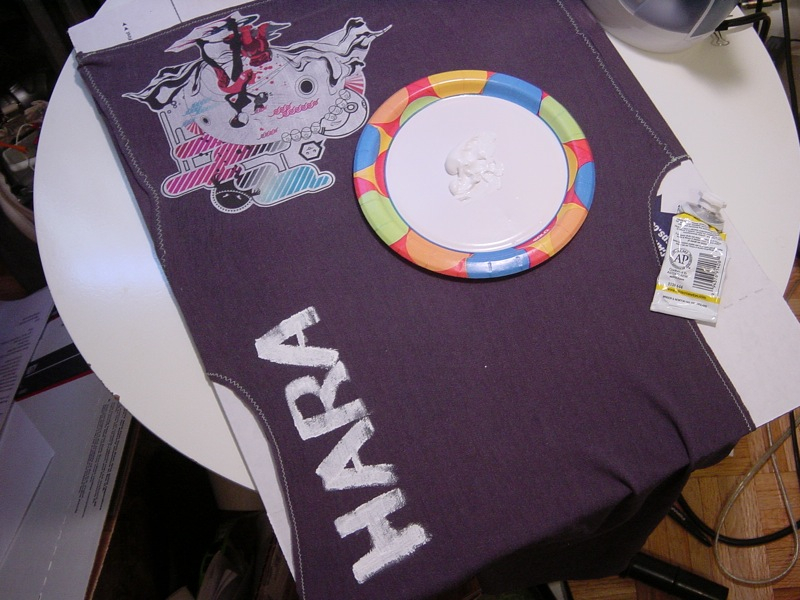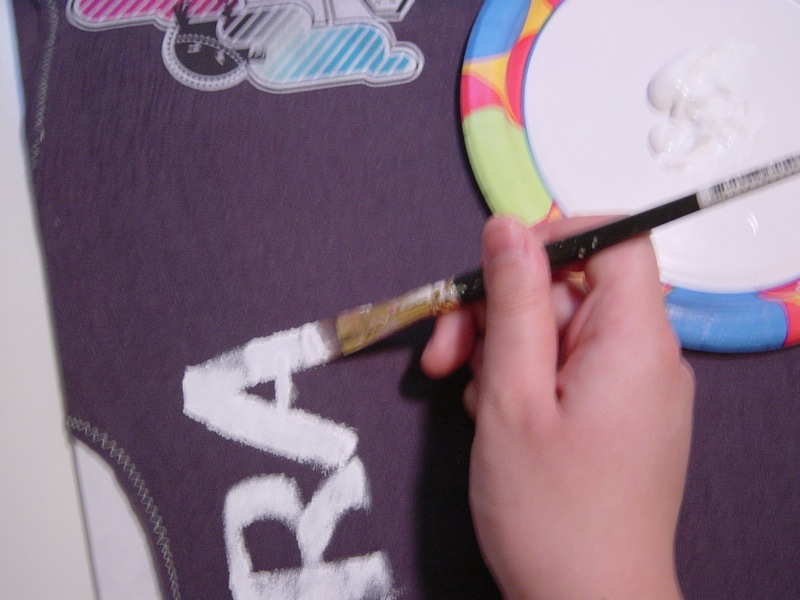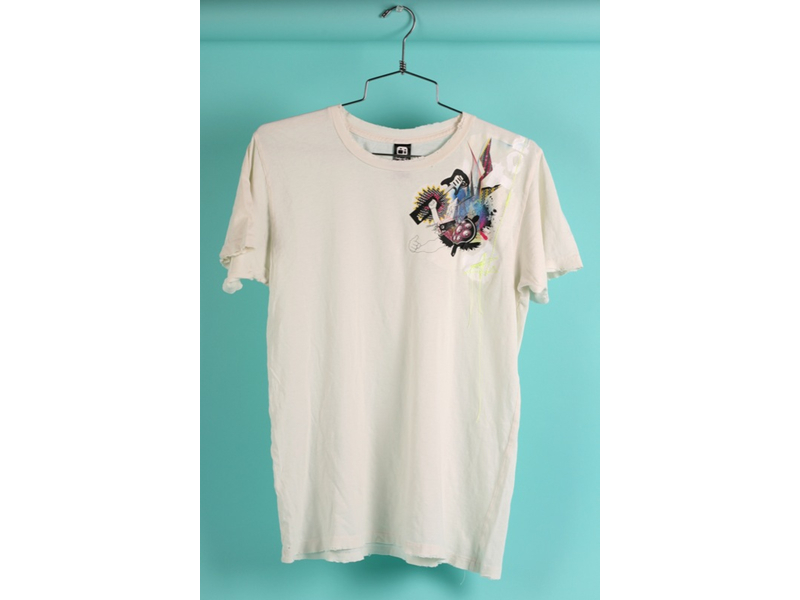Measure your arm, bust, waist, and shirt length. Then use the formulas here to calculate any size changes. If the width needs to be increased, add to the width beside the fold line. If the arm size needs to be increased, cut the pattern at the arm line and add the increase. If the length of the shirt needs to be increased, cut the pattern at the length line and add the increase.
Arm size increase. Measure around your arm at the shoulder. If the measurement is 13 1⁄2″ or less, then do not increase the arm size and leave as is. If measurement is greater than 13″ you will need to increase the arm size: divide your measurement by 2, then subtract 6 1⁄2″.
(arm size measurement/2) – 6 1⁄2 = arm size increase
Example: Arm size measurement is 16″, (16/2) – 6 1⁄2″ = 1 1⁄2″, Arm size increase = 1 1⁄2″
Width increase. Measure around your bust (at apex) and waist (at high waist, the narrowest part). Add measurements together. If measurements are 64″ or less, then do not increase width and leave as is. If measurement is greater than 64″ then divide measurements by 8 and subtract 8″.
[(bust + waist measurement)/ 8] – 8″ = width increase
Example: Bust measurement is 38″, waist measurement is 30″, [(38 + 30)/ 8] – 8″ = 1⁄2″ Waist increase = 1⁄2″
Length increase. Measure the length from your neck base to upper hip. If the length measurement is 19″ or less, do not increase and leave length size as is. If the length measurement is less than (18″ + arm size increase), then do not increase and leave the length size as is.
Example: Length measurement is 19″, arm size increase = 3″ 19″ < (18" + 3")
If the length measurement is greater than 19″, then subtract (18″ + arm size increase) from length measurement. If there was no arm size increase, then arm size increase is 0.
Length measurement – (18″ + arm size increase) = length increase
Example: Length measurement is 21″, arm increase is 1 1⁄2″, 21 – (18″ + 1 1⁄2″) = 1 1⁄2″, Length increase = 1 1⁄2″



